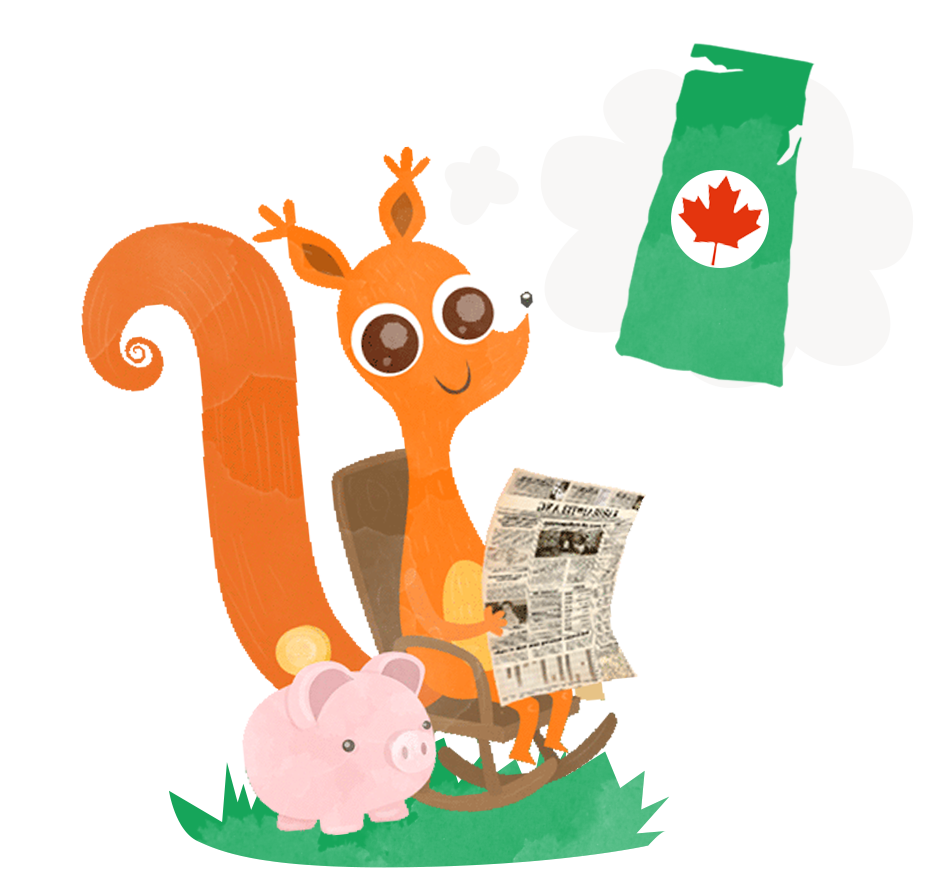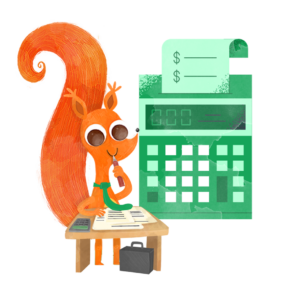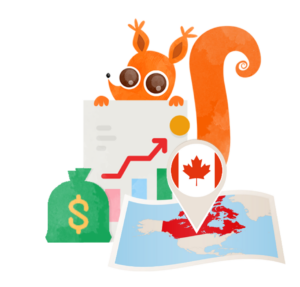
If it’s time to start thinking about where and when you’re planning to retire, and you already live in the Land of Living Skies, you’re in luck: Saskatchewan is one of the least expensive provinces in Canada when it comes to overall cost of living.
When you’re working with a fixed income, this is wonderful news.
Still, you might be wondering how much you’ll need to have in retirement savings before you can stop working, or if it makes sense to move to a larger (or smaller) city.
Regardless of what questions you might have, we’ll break down everything you need to know to be able retire in Saskatchewan.

According to livingcost.org, a crowd-sourced database on living expenses across the world, Saskatchewan is the ninth most expensive Canadian province to live in, with average monthly expenses of $1,535 for a single person.
Let’s break that down a bit more.
Housing costs
In 2023, the average price of a home in Saskatchewan was just over $315,000. Of course, where you want to live will determine a lot about the price of the home you’re hoping to buy.
In Saskatoon, for example, the median home price was $380,000 in June of 2023. In Regina, on the other hand, you can buy a home for $273,000 on average.
In smaller towns, homes get even cheaper: Moose Jaw has an average home price of $246,000, and in Prince Albert homes sell for $190,000 on average.
So, given an interest rate of 5.5% and a property tax rate of 1.25%, you could reasonably expect to pay around $1,400 per month on a $300,000 mortgage.
Cost of healthcare
In 2022, Canada spent $8,563 per Canadian on healthcare. However, because Canada has a government-subsidized healthcare system, only 14.3% of that came from patients out of pocket.
So, as a Canadian retiree, you should expect to pay approximately $1,200 per year in healthcare expenses.
Energy & utilities
Estimating energy usage costs is difficult, as it varies depending on many factors: the quality of insulation in your home, the energy efficiency of the windows and doors, your own personal heating habits, and more can all impact what you actually end up paying for your energy bill every month.
Having said that, Saskatchewan residents pay a little over 14 cents per kilowatt hour of energy usage, and on average, they use about 1,400 kilowatt hours per month. If you do the math, that shakes out to just over $250 per month in electric bills.
Food and groceries
The average weekly grocery bill for a family of four in Saskatchewan (as of 2018, the most recently available data) was around $245 per week. This average amount also changes depending on where in the province you live.
In the north, those costs rise to $316 per week, whereas in the South they fall to $227.
Total expenses to live in Saskatchewan
If you add up all the expenses we calculated, you’re looking at a grand total of $2,730 in monthly expenses. This includes your mortgage payment, grocery bill, heating bill, and healthcare expenses.
Now, this is about $1,300 more than livingcosts.org estimated, so take that with something of a grain of salt. Any attempt to calculate an average living expense for a province twice the size of Germany is going to be something less than pinpoint.
Plus, if you’ve been living in Saskatchewan for some time, it’s probable that you already know how expensive it is to live there.

These days, the word “retirement” means different things depending on who you ask. For many, the dream of leaving the workforce entirely and living on pensions, savings, and Old Age Security (OAS) payments is simply not feasible.
Regardless of whether you retire fully on pension and savings or if you’ll be working part time to earn some extra money to make ends meet, Saskatchewan is a relatively affordable place to live.
Here’s a breakdown of some of the more common income sources and what you could generally expect those monthly payments to look like.
Government-sponsored income sources
There are a variety of government-sponsored income sources you may have access to for income in retirement. Most are some form of pension plan which you may or may not have had to contribute to your entire life.
Canada Pension Plan (CPP)
How much you could reasonably expect from your monthly CPP payment depends on several factors, the most important of which are how much money you earned while making contributions to the pension plan and the age at which you retire.
While some CPP benefits amount to as much as $1,300, the average CPP payment, as of 2023, is just over $811.
By design, the CPP is not going to replace your entire income; it can, however, play an important role in making ends meet.
Old Age Supplement (OAS)
Whereas the United States uses the Social Security system, Canada employes the OAS in order to ensure its citizens are able to live comfortably after they retire.
How much you can expect to receive from your OAS pension depends on factors such as the age at which you retire and the income you earned while working.
A married individual making less than $134,000 per year, for example, could receive a maximum of $698 per month from their OAS.
If you’ve been following along doing the math, we’re up to around $1,500 per month between OAS and the CPP, which is a little more than half of our estimated monthly expenses to live in Saskatchewan.
Luckily, there are a few more potential sources of income we can throw into the mix.
Guaranteed Income Supplement (GIS)
If you and/or your spouse earn below a certain amount annually, and you’re also receiving the OAS, you are eligible to receive the GIS as well. Depending on various factors, you could receive between $628 and $1,043 per month in addition to any other pension income you receive.
This benefit is restricted to those with relatively low incomes, however. In order to qualify as a single person, for example, you would need to make below $21,000 per year.
Personal savings and investments
Basically any financial advisor will tell you that you should be making investments in personal retirement accounts as early in life as humanly possible.
In Canada, there are a few options for retirement savings accounts you might consider.
Registered Retirement Savings Plan (RRSP)
The RRSP is a government-sponsored account that allows you to reduce your tax bill by contributing to your retirement. Contributions to RRSP accounts are tax deductible, although you will have to pay taxes on any income you earn from these accounts after you retire.
The maximum annual contribution to an RRSP is 18% or your income or a designated amount ($30,780 in 2023), whichever is less. If, however, you have available RRSP room at the end of the year, it will roll over to next year.
Tax Free Savings Account (TFSA)
A TFSA account is similar to an RRSP except for the time at which you receive tax benefits is different. While the RRSP offers immediate tax reduction, the TFSA invests money you’ve already paid taxes on, which allows you to withdraw from these accounts tax-free after you retire.
The other major benefit of a TFSA is any gains made by money invested are tax free as well.
The maximum annual TFSA contribution is $6,500, however that begins accumulating as soon as you turn 18, so if you’re 25 and have never contributed to a TFSA, you could dump nearly $50,000 into the account in one year (if you’re able).
Saskatchewan Pension Plan (SPP)
The Saskatchewan Pension Plan is a privately managed investment portfolio you can contribute to as a worker and then receive benefits from in retirement.
In order to earn SPP benefits, you have to apply for membership through their website and make contributions to your account as you work. While you can have an SPP and CPP benefit at the same time, doing so would mean you were making twice the contributions while working, which may not be feasible, depending on your income.
Rather than paying out a set amount monthly as determined by your income and retirement age, the SPP is an investment tool used to grow your savings while working so you can take disbursements in retirement. They claim a historical return on investment of 8%.
Part time work
If your personal accounts and government sponsored pensions don’t quite add up to enough for you to live comfortably in Saskatchewan after you retire, you may consider taking on part-time employment.
According to ZipRecruiter, the average hourly pay for part time work in Saskatchewan is $15 per hour.
This means that if you’re receiving OAS and CPP benefits and nothing else, you might have to work around 25 hours per week in order to make ends meet.
However, if you’ve done any sort of additional retirement saving, that requirement drops off fairly quickly.

What is the retirement age in Saskatchewan?
The official retirement age in Saskatchewan is 65. However, certain retirement benefits can be taken as early as 60 or as late as 70. As a general rule, the earlier you begin receiving retirement benefits, the less money you’ll receive per month; the longer you wait, the more you’ll receive.
Who is eligible for the Saskatchewan Pension Plan?
Believe it or not, you don’t actually have to live (or have lived) in Saskatchewan in order to qualify for the SPP. As long as you’re Canadian and between the ages of 18 and 71 and you have unused RRSP room, you can apply for an SPP account and begin making contributions.
How many years do you have to work in Canada in order to get a pension?
Every Canadian is entitled to a CPP, however, the amount you receive in monthly payments will be determined by how long you have worked and how much you made while working. You can use this calculator to estimate what to expect in terms of CPP payments based on these factors.
YOUR FREE FINANCIAL PLAN
Are you ready to invest in your future?
Build your free plan today.
Start now